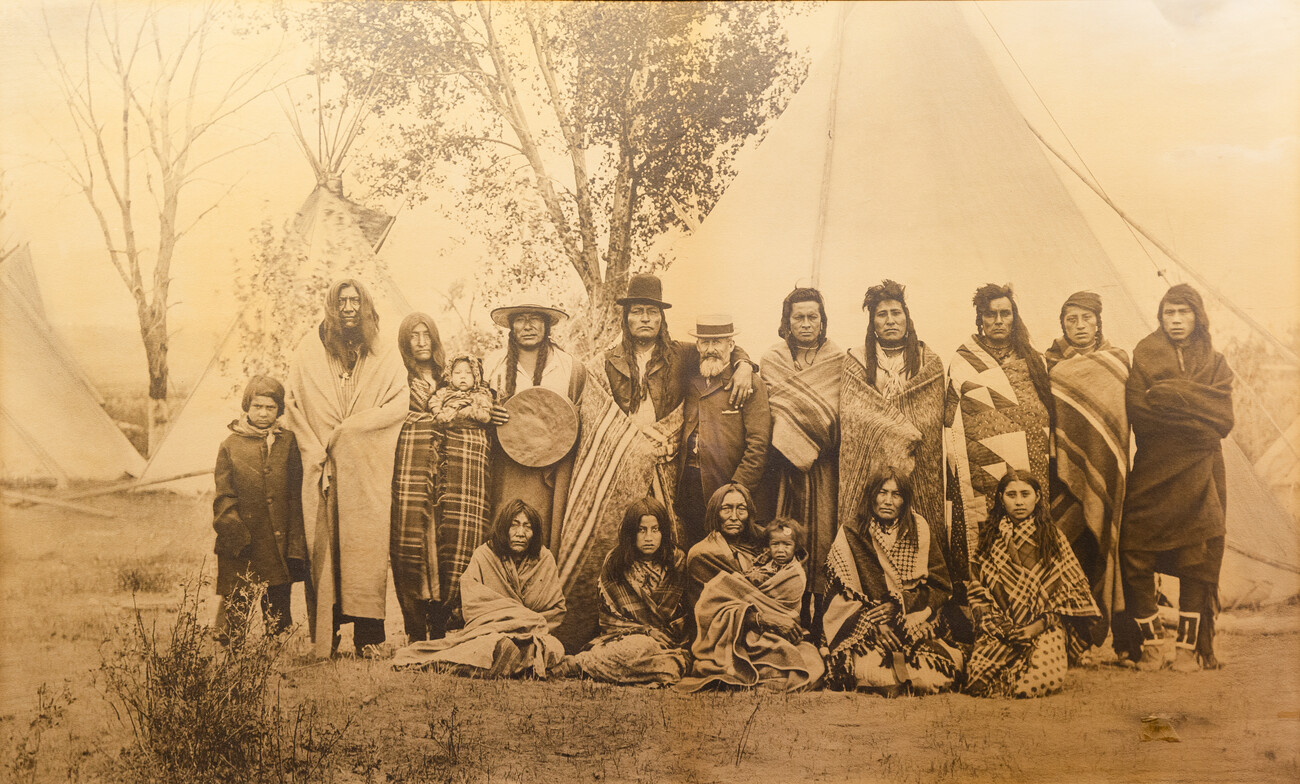
 press-releases
press-releases 
SWAMPSCOTT — The recent discovery of a 163-year-old depicting Penobscot tribe members camped in an area now known as Little’s Point led the Historical Commission on a journey through history.
In November, a month federally recognized as Native American Heritage Month, a custodian working for the Town of Swampscott informed the Historical Commission of a photo he found in storage at the Swampscott Public Library. Dated 1860, the roughly 3-by-2-foot photograph depicts 18 Penobscot Native Americans posing with Swampscott resident Jonathan Phillips on a wigwam encampment.
Although the Penobscot tribe mainly occupied reservation land in Maine, Historical Commission Vice Chair Jonathan Leamon said the tribe periodically traveled to Swampscott on retreats to sell their hand-woven baskets. In 1860, the tribe temporarily stayed on land owned by Phillips.
“At the time, they (Penobscot tribe members) would come for retreats periodically, and they took place on Phillips point, which is now a little disappointed Swanscombe; it’s actually Phillips’ land, which was fairly extensive between the fish house and what is now Little’s Point,” Leamon said.
After discovering and researching the photograph, the commission had it professionally restored, framed, and displayed at Swampscott Town Hall. Now, Historical Commission Chair Nancy Schultz said the commission plans to have the photograph professionally scanned, re-printed, and framed to be given as a gift from the Town of Swampscott to the Penobscot Nation for display at the tribe’s museum in Indian Island, Maine.
Schultz added that while the commission researched the Penobscot tribe, she was fascinated by their support for the American Revolution.
“The Penobscot tribe were incredible partners to the patriots during the American Revolution. They actually were extremely helpful to the patriots because they had been especially poorly treated by the British and struggled, as a lot of the native tribes had been struggling, under the British colonies. They saw the chance to help the Patriots as a possible way to improve their own situation… Unfortunately, as is so often the case, they did not receive the full measure of the award of reward they were promised,” Schultz said.
The commission also recruited Anthropologist Mary Ellen Lepionka, who researches indigenous cultures native to Essex County, to help identify the photographed Penobscot people using a hand-written 1860 Penobscot census as a reference. In a public presentation on the Penobscot people and their time in Swampscott, Lepionka said she believed the man in the photograph with his arm around Phillips was a tribal leader.
“The people in the photograph are their ancestors, and we hope they’ll tell us more about them,” Lepionka said. “Indigenous people everywhere still face challenges today. The Penobscot have had to be vigilant against encroachments on their lands, the pollution of their river with mercury and industrial waste, and a continuing failure of state and federal governments to carry out the terms of their treaties. Through time, the basket makers have helped to preserve indigenous culture and sodality in America.”
24World Media does not take any responsibility of the information you see on this page. The content this page contains is from independent third-party content provider. If you have any concerns regarding the content, please free to write us here: contact@24worldmedia.com